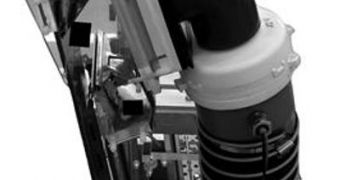Even in the cleanest of cleanrooms, fine particles can deposit themselves on intricate circuit boards. Although it may not seem like much, they have the ability to severely alter the operating parameters of a certain instrument, tainting the results obtained with it, and generally making scientists' lives miserable. In order to eliminate this obstacle to producing highly sensitive electronics, experts at the Fraunhofer Institute for Interfacial Engineering and Biotechnology IGB, in Stuttgart, Germany, have developed a new system for cleaning the work area of these fine particles, AlphaGalileo reports.
In the food and pharmaceuticals industry, for example, the issue is that no particles larger than five microns in diameter should exist on packaging. This is a very strict standard to reinforce, and existing equipment barely manages to detect contamination in time. In the printing industry, for example, if fine particles remain on the paper, they can contaminate the quality of the printed material. If they get trapped in electronics, these particles can severely affect their performance, or cause them to short-circuit and catch fire. Therefore, getting rid of them is significantly important.
Generally, a high-power vacuum is used for the job. The machine blows air on the target to be cleaned, and then sucks it back in, this time alongside the fine particles. For this technique, the limit is reached when it has to deal with particles less than 20 micrometers in diameter. On several occasions, the vacuums proved ineffective at decontaminating areas coated with such small “intruders.” The main reason for this is the fact that the electrostatic force is simply too great to be defeated by moving air.
Together with colleagues from NITO A/S, in Denmark, Ziegener + Frick GmbH, in Ellhofen, and the Danish Innovation Institute, the Fraunhofer Institute research team has managed to devise a new, groundbreaking system that takes care of these issues. “The system guarantees the quality of the product and improves the working environment of employees, as it reliably collects the harmful particles, preventing them from going into the air and then into the lungs of employees,” IGB researcher Sukhanes Laopeamthong explains. The new device will become commercially available for customers in just two years, its creators hope.
It works by charging the fine particles with a positive electric charge, essentially turning them into large ions. A negatively charged cathode is then used to attract the positive particles, and a carefully aimed air stream moves them to a collecting point, where they are stored. The force with which the cathode acts is sufficient to defeat the electrostatic ones, the IGB team concludes.

 14 DAY TRIAL //
14 DAY TRIAL //